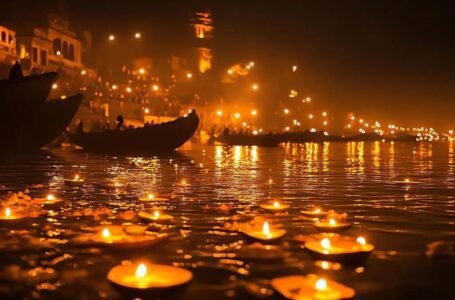Prambanan Temple: A Majestic Testament to Indonesia’s Cultural and Spiritual Heritage

The Prambanan Temple, known locally as Candi Prambanan, is a shining testament to Indonesia’s rich cultural and spiritual heritage. Nestled in Central Java, near the Yogyakarta border, this UNESCO World Heritage Site stands as a breathtaking example of ancient Javanese craftsmanship. Its intricate design and towering structures highlight the incredible skill, artistry, and deep religious devotion of the people who built it. More than just a collection of temples, Prambanan is a sacred space that has inspired awe and reverence for over a thousand years.
Built in the 9th century during the rule of the Sanjaya Dynasty, Prambanan Temple represents a golden era of Hindu-Buddhist cultural harmony in Java. Dedicated to the Hindu deities Brahma, Vishnu, and Shiva, the temple’s centerpiece is a grand shrine honoring Shiva, the Destroyer. For the Sanjaya rulers, Prambanan was more than a place of worship—it was a statement of their spiritual devotion and a symbol of their political power, showcasing the heights of Hindu culture in the region.
The construction of Prambanan Temple is often seen as a reflection of the rivalry between the Hindu Sanjaya Dynasty and the Buddhist Sailendra Dynasty, who built the nearby Borobudur Temple. Prambanan’s impressive scale and intricate design were likely intended to rival, if not surpass, Borobudur, serving as a powerful statement of Hinduism’s prominence amidst the strong Buddhist influence in Java during that era.
Prambanan’s architecture is a stunning example of ancient engineering and artistic brilliance. Originally, the complex boasted 240 temples, though many have been lost or damaged over the centuries. At its heart are the three largest and most important temples, each dedicated to a member of the Hindu Trinity: Shiva, Vishnu, and Brahma. These towering central shrines are surrounded by smaller temples, called “perwara,” along with numerous additional shrines and structures that once completed this magnificent complex.
The Central Shrines
The Shiva Temple, or Candi Siwa, is the tallest and most striking structure in the Prambanan complex, rising to an impressive 47 meters (154 feet). Dedicated to Shiva, this temple serves as the centerpiece of the site. Inside the main chamber, a magnificent statue of Shiva takes pride of place, surrounded by smaller statues of Agastya, Ganesha, and Durga in adjacent chambers. The temple’s walls are adorned with intricate bas-reliefs that bring to life scenes from the Ramayana, a beloved Hindu epic deeply woven into Java’s cultural heritage.
Vishnu Temple (Candi Vishnu)
Positioned to the north of the towering Shiva Temple, the Vishnu Temple is slightly smaller but equally captivating. Dedicated to Vishnu, the Preserver, this temple houses a statue of the deity in its inner sanctum. The walls are adorned with intricate bas-reliefs that tell stories from the Hindu Puranas, celebrating Vishnu’s vital role in upholding balance and cosmic order.
Brahma Temple (Candi Brahma)
To the south of the Shiva Temple stands the Brahma Temple, a tribute to Brahma, the Creator. Inside its inner chamber, a statue of Brahma takes center stage. The temple’s intricately carved bas-reliefs pick up the Ramayana story where the Shiva Temple’s depictions leave off, seamlessly continuing the epic’s narrative in a stunning display of artistry and storytelling.
The Perwara Temples
Encircling the main shrines are 224 smaller temples, arranged in neat concentric squares. These structures were likely built to honor other Hindu deities and reflect the intricate nature of Hindu cosmology. Although many of these temples now lie in ruins, ongoing restoration efforts aim to preserve and rebuild them, keeping alive the legacy of this remarkable architectural complex.
Prambanan’s design is deeply rooted in Hindu cosmology, highlighting the sacred connection between humanity and the divine. The entire temple complex is arranged like a mandala, a symbolic map of the universe. At its heart, the central shrines represent Mount Meru, which is considered the cosmic center in Hindu, Buddhist, and Jain traditions. Surrounding these core temples are other structures and courtyards, arranged in layers that mirror the different levels of the universe. This thoughtful layout guides worshippers on a spiritual journey, leading them from the earthly realm toward the divine.
The temple’s detailed carvings add to its deep spiritual meaning. They tell stories from the Ramayana, portraying the timeless battle between good and evil. These images not only serve as religious teachings but also offer moral lessons. The gods and goddesses enshrined within the temple represent the continuous cycle of creation, preservation, and destruction—key concepts in Hindu philosophy.
Prambanan’s period of glory was relatively brief. By the 10th century, political power in Java had shifted to East Java, and the temple complex was slowly abandoned. Over the centuries, it fell into disrepair, with natural disasters like earthquakes and volcanic eruptions speeding up its decline. By the time Europeans first discovered Prambanan in the 18th century, it was largely in ruins, hidden by jungle and largely forgotten.
In the early 19th century, Dutch colonial officials rediscovered the site, sparking a renewed interest in Indonesia’s ancient heritage. Restoration work began in the early 20th century and continues today. While not all the original structures can be fully restored, significant progress has been made in preserving and rebuilding the central temples and many of the surrounding shrines.
Prambanan continues to be a vibrant center of worship and cultural celebration. For local Hindus, it is a sacred place where rituals and ceremonies take place, especially during important Hindu festivals like Galungan and Nyepi. The temple also hosts traditional Javanese dance and music performances, including the renowned Ramayana Ballet, which brings the epic’s tales to life against the stunning backdrop of the illuminated temples.
More than just a religious site, Prambanan stands as a symbol of Indonesia’s rich cultural diversity and deep historical roots. It attracts visitors from around the world, acting as a bridge between the past and the present, and reminding us of the lasting power of art, spirituality, and human creativity.
Preserving Prambanan comes with significant challenges. The temple complex is highly vulnerable to natural disasters like earthquakes, volcanic eruptions, and the tropical weather of the region. The devastating earthquake in 2006 caused extensive damage, underscoring the ongoing need for restoration and conservation efforts.
Modern tourism also brings its own set of challenges. While the influx of visitors helps fund preservation work, it also leads to concerns about the wear and tear on the ancient structures. Finding a balance between making the temple accessible to tourists and ensuring its long-term preservation requires careful planning and management.
UNESCO and the Indonesian government have collaborated extensively to protect Prambanan. Advanced techniques in archaeology and materials science are employed to stabilize and restore the temples. Educational initiatives aim to raise awareness about the importance of preserving this cultural treasure, both for local communities and international audiences.
One of the most fascinating aspects of Prambanan is its strong connection to the Ramayana, one of Hindu mythology’s greatest epics. The temple walls are adorned with intricate bas-reliefs that depict key episodes from the story, bringing to life the adventures of Rama, Sita, Lakshmana, and Hanuman. These carvings are not just stunning works of art; they also serve as a way to impart moral and spiritual lessons to those who visit the temple.
Today, the Ramayana Ballet, performed at Prambanan, breathes new life into this ancient tale through a captivating mix of dance, music, and drama. Set in an open-air theater with the illuminated temples as a dramatic backdrop, the performance offers a mesmerizing cultural experience for both locals and tourists. The ballet highlights the timeless themes of the Ramayana, such as love, loyalty, and the triumph of good over evil, showing why this epic continues to resonate across generations.
The construction of Prambanan showcases incredible engineering skill. The builders used locally sourced andesite stone, demonstrating a deep understanding of materials and how they behave. Each stone was carefully carved and precisely arranged, without the use of modern adhesives. Instead, the stones fit together using interlocking mechanisms, ensuring the temple’s stability for centuries.
The layout of the temple complex also reflects a sophisticated grasp of spatial design and symbolism. The careful alignment of the temples, their orientation, and the way the structures are arranged hierarchically all mirror Hindu cosmological ideas. This thoughtful planning highlights Prambanan’s spiritual and cultural importance as a sacred space.
Prambanan’s influence stretches far beyond its original historical context. Its architectural style has inspired countless modern buildings, both in Indonesia and around the world. Elements of Prambanan’s design, such as its tiered towers and detailed carvings, can be found in contemporary religious and cultural structures.
In the world of art, Prambanan continues to inspire artists and artisans. The temple’s bas-reliefs and statues have become a wellspring of creativity for traditional Javanese art forms, including batik, sculpture, and wayang kulit (shadow puppetry). These art forms, in turn, help preserve and reinterpret the rich cultural heritage of Prambanan, ensuring that its legacy continues to inspire future generations.
As one of Indonesia’s most popular landmarks, Prambanan plays a crucial role in the country’s tourism industry. The temple complex draws millions of visitors each year, providing a significant boost to the local economy. Guided tours, cultural performances, and educational programs offer visitors a deeper understanding of Prambanan’s rich history and cultural importance.
To ensure tourism is sustainable, efforts have been made to manage visitor flow and minimize the impact on the temple’s delicate structures. Additionally, there are ongoing initiatives to promote community-based tourism, allowing local residents to actively participate in and benefit from the preservation and promotion of Prambanan.
Looking to the future, preserving and promoting Prambanan will require ongoing collaboration between local communities, government agencies, and international organizations. New technologies, such as 3D scanning and virtual reality, offer exciting opportunities to document and share the temple’s beauty with a global audience. These tools also support restoration efforts by providing precise data to help guide the reconstruction of damaged areas.
Educational programs that encourage local pride and ownership will be key to ensuring Prambanan’s long-term sustainability. By involving local residents in conservation and tourism activities, the temple can continue to be a powerful symbol of cultural identity and provide economic benefits for the community.
Prambanan Temple stands as a magnificent reflection of Indonesia’s rich cultural and spiritual heritage, earning its place among the world’s greatest architectural marvels. Located in Central Java, this Hindu temple complex showcases the incredible craftsmanship of its builders while carrying deep religious and philosophical significance. Over the centuries, the temple’s glory waned as political power shifted, natural disasters took their toll, and the complex was abandoned. However, its rediscovery has sparked a renewed appreciation for its beauty and importance. Today, Prambanan continues to captivate visitors, acting not only as a sacred place of worship but also as a powerful symbol of Indonesia’s vibrant cultural identity.
The temple’s design is nothing short of extraordinary, offering a glimpse into the Hindu worldview and an advanced understanding of spatial organization. The layout of the complex mirrors the structure of the universe, guiding worshippers on a spiritual journey from the earthly realm to the divine. At the heart of the temple stand the central shrines, which symbolize Mount Meru, the axis of the universe in Hindu belief. Surrounding them are other temples that reflect the concentric layers of existence, reinforcing the temple’s role as a bridge between the physical world and the divine. This intricate and thoughtful design highlights the deep spiritual connection between humanity and the cosmos.
Prambanan is not just an architectural masterpiece; it is deeply connected to the Ramayana, one of the most important epics in Hindu mythology. The temple’s intricate bas-reliefs bring key moments from the story to life, and these carvings are more than just artistic expressions—they are also spiritual lessons. The scenes depicted on the temple walls teach timeless values and provide moral guidance for all who visit. The Ramayana Ballet, performed at the temple, takes this connection even further. Through a blend of dance, music, and drama, the ballet brings the ancient story to life, offering a captivating experience that bridges the past and the present.
However, preserving Prambanan is no small task. The temple faces significant challenges, including the threat of natural disasters, the impact of tourism, and the ongoing need to maintain such an ancient site. Efforts to restore and protect the temple are ongoing, with modern technologies like 3D scanning and virtual reality offering new ways to document and preserve its integrity. These innovations help ensure that the temple’s grandeur and historical significance are safeguarded for future generations. Additionally, community-based tourism initiatives are essential in making the preservation process sustainable. By involving local communities, these programs ensure that residents can contribute to and benefit from the preservation of this cultural treasure.
Prambanan is more than just a historical site; it is a living symbol of Indonesia’s cultural diversity and religious heritage. As one of the most visited landmarks in the country, it draws millions of tourists each year, contributing to the local economy and raising awareness about Indonesia’s rich history. The temple continues to serve as a bridge between past and present, reminding us of the enduring power of art, spirituality, and human ingenuity. As efforts to preserve and promote Prambanan move forward, it will remain an essential cultural treasure, a source of national pride, and an enduring beacon of Indonesia’s historical and spiritual legacy.


